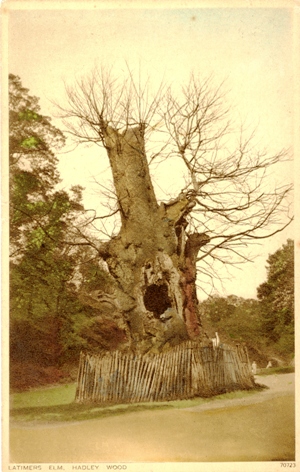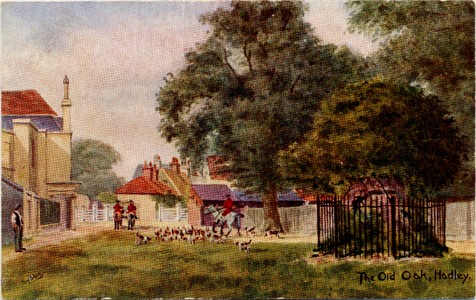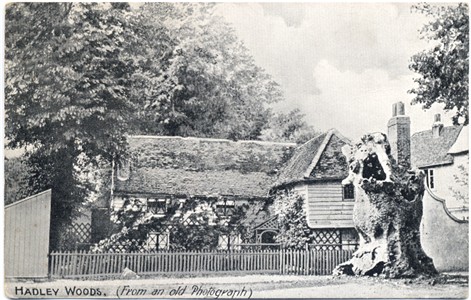|
Latimer's Elm The engraving is based on a drawing by Miss E. C. Wilkes (engraved J.P. & W.R Emslie) in Monken Hadley, by Frederick Charles Cass (published in 1880). The book throws doubt on the story linking the elm with Bishop Latimer. The postcards show it at later dates and it was eventually cut down in about 1935. see Trees |
||||||
|
||||||
 Hadley High Stone This Monument was erected in 1740 to commemorate the Battle of Barnet, which was fought between King Edward IV and the Earl of Warwick in 1471. According to another postcard, by Sydbie the Earl was killed between the two trees seen behind the monument. |
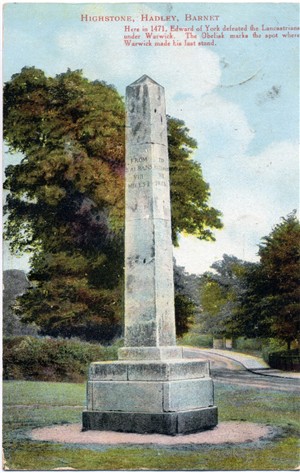 |
|
|
The Old Oak The art postcard is by Sydbie and carries the description: "The Last of the Barons" Friar Bungay hanged his rival Adam Warner on this tree after the Battle of Barnet. The old Hermitage in which King Edward slept before the Battle, stood opposite the Oak, on the left of the picture." The book was a historical novel written by Lord Lytton [Bulwer Lytton] of Knebworth House, in 1843, and this may have led to it sometimes being referred to as the "Warwick Oak". The second card carried a manuscript message which associates a different legend with the same tree. "This cottage has now been destroyed. It was supposed to be far older than Hadley Church. I think it was a great mistake ever to have had it destroyed. Charles II took shelter in it." It was removed during the Second World War. see Trees |
| The Stocks and Whipping
Post New Stocks were erected in 1787; they were placed near the pound in 1788, rebuilt in 1827, and in 1866 stood on Hadley Green west of the Great North Road. (VCH) |
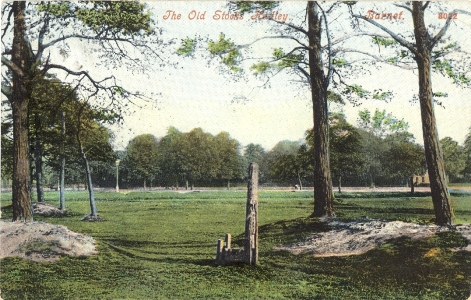 |
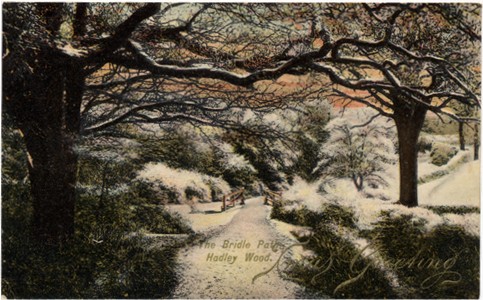 |
Hadley Woods Hadley Common, which includes Hadley Woods, is managed under its own Act of Parliament made in 1777. The freehold of the Common is vested in the church wardens of Monken Hadley Church in perpetuity in trust for the commoners who have their own rules concerning vehicular access, grazing and use of the woods by the public. [Conservation Area] |
| Hadley Green This charming village green lies between High Barnet and Monken Hadley, on either side of the Great North Road. Apart from the passing traffic, it is a quiet and peaceful spot, ideal for informal outdoor recreation. However, in 1471 it was the site of the Battle of Barnet. A stone on the western section notes the location of the former village stocks. Hadley Green was acquired by the council in the form of a donation from Miss Rhoda Wyburn in 1931 (owner of the Manor House estate). [Conservation Area]
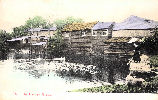 On Hadley Green |
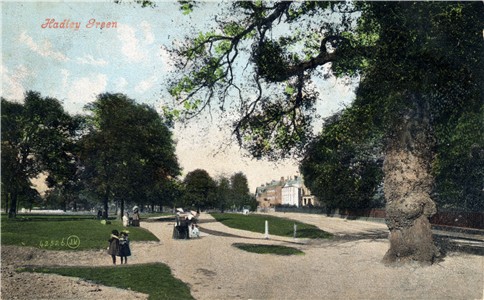 |
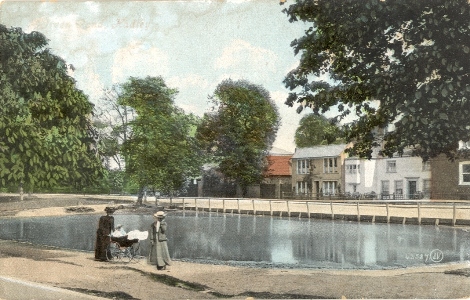 |





